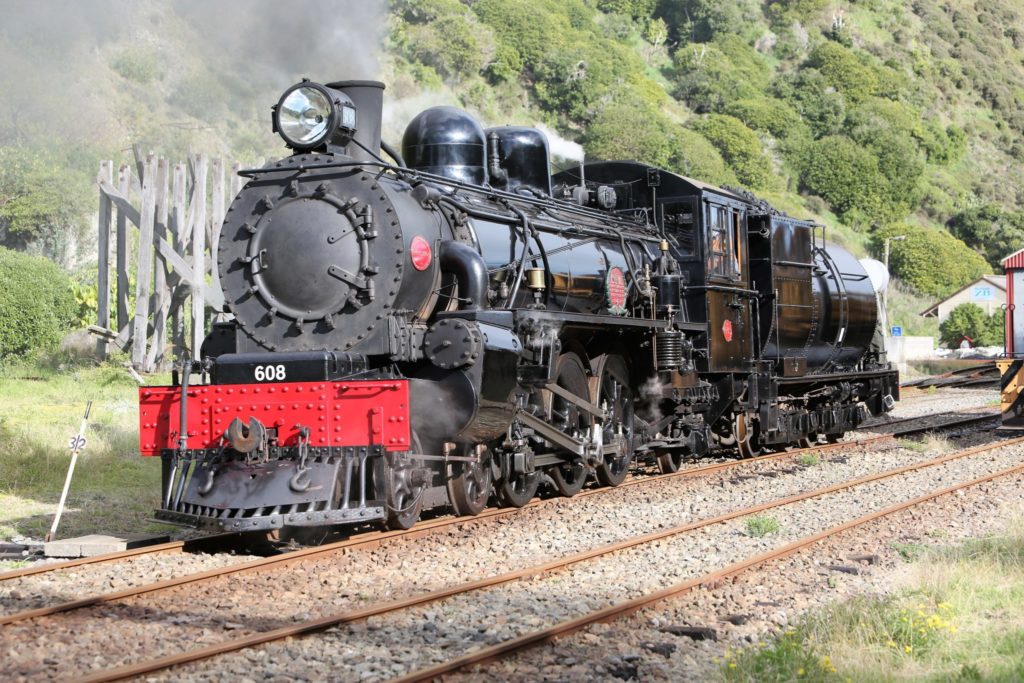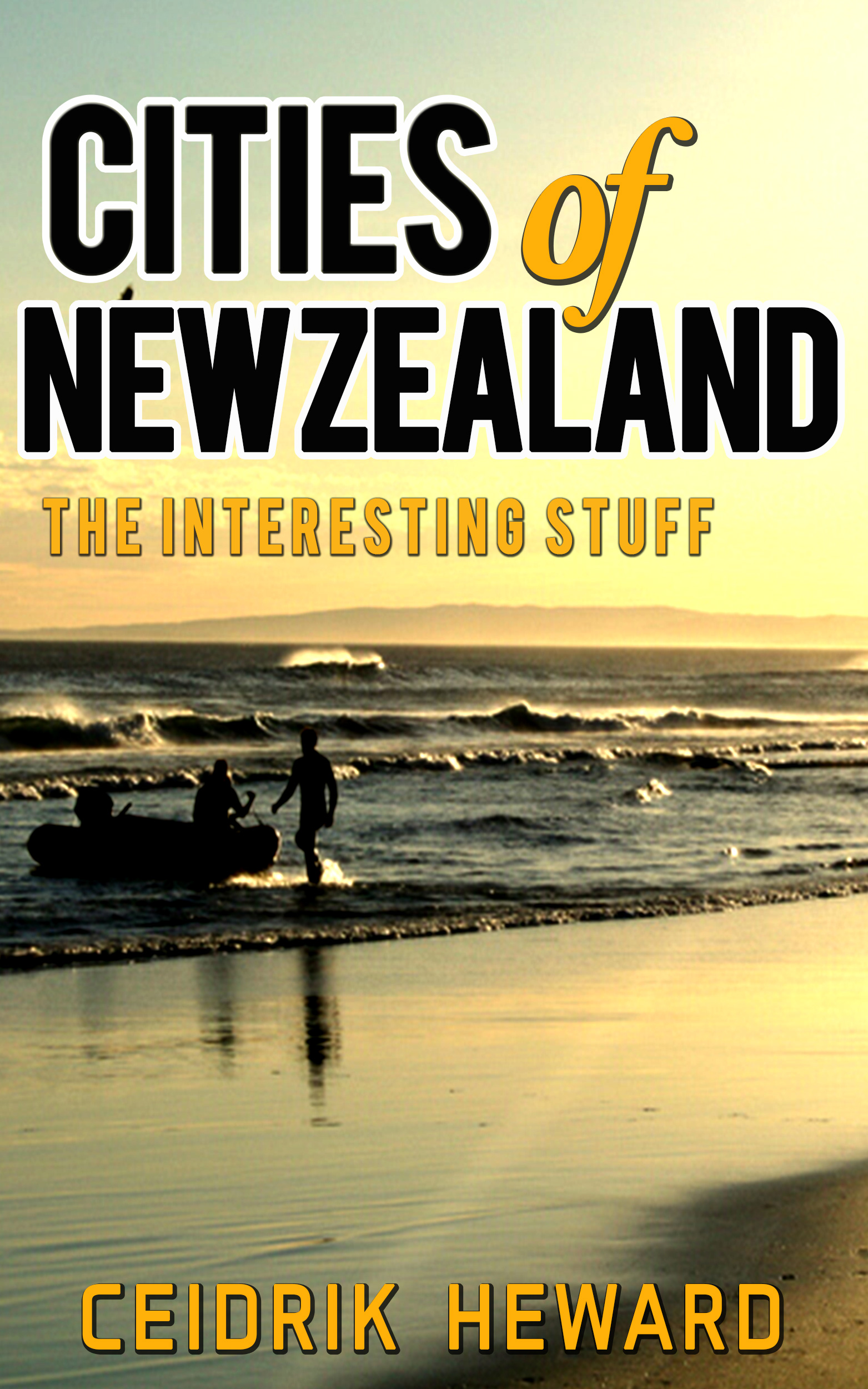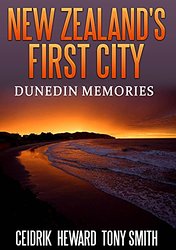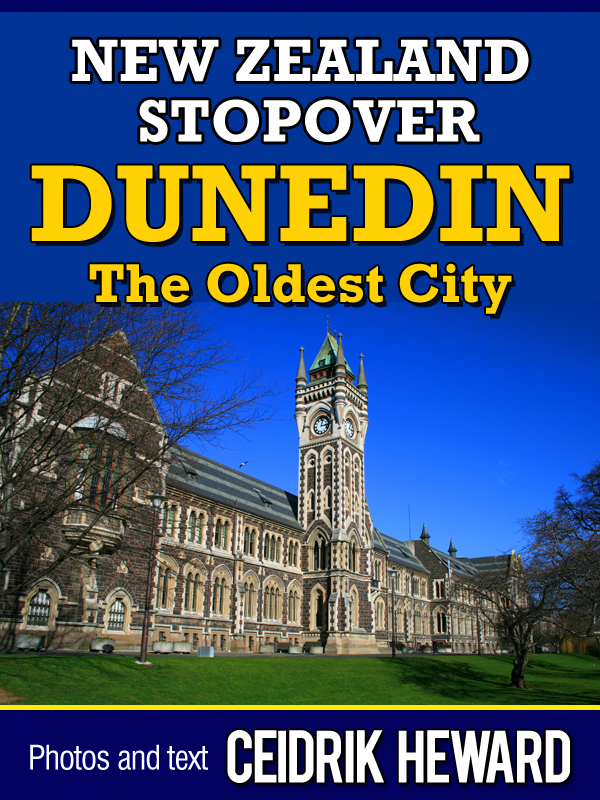I can remember a number of years ago when the steam locomotive Passchendaele made a special trip from its base north of Wellington down the line to end its trip at the Wellington Railway Station. I was on the platform with a friend who convinced me to join the crowd to see it close up. I still remember the awesome sight of the huge engine slowly approach the end of the platform with a hiss as the giant steel wheels came to a stop. Its gleaming black body emitted jets of steam from the cylinder and around the piston and coupling rods. Black smoke rose from the stack to fill the air with the smell of burning coal. The bulk of the engine was actually quite frightening and the noises it made only added to the fearsome presence of this manmade monster. In fact, there were two small boys near me who screamed in fear as the engine hissed and squealed to a stop. They were quite terrified by this alien beast that had arrived with so much fuss.
 Passchendaele (marlboroughflyer.co.nz)
Passchendaele (marlboroughflyer.co.nz)
WAR COMMEMORATION
A total of 5000 railway men served in the First World War and 444 died in battle. In 1925 the Minister of Railways, Gordon Coates, thought it would be a good idea to name a steam locomotive in these men’s honour. His staff considered the names Somme, Le Quesnoy and Ypres, but Coates chose Passchendaele where one of the bloodiest struggles of the entire war took place. Now spelt Passendale, the name seemed the most appropriate for a memorial steam train. The muddy nightmare at Passendale in Belgium, with lethal gas filling the air, claimed the lives of 2,500 young Kiwi soldiers, including a tragic number of NZ railway men. The bloody battle of Passchendaele became the symbol of nightmarish trench warfare that defined the First World War.
The locomotive selected to carry the name was built at Christchurch’s Addington railway workshops in 1915. It was the first of the famed class of AB ‘Pacifics’, regarded by many as the most successful and versatile locomotives to ever run on New Zealand railways. More than 140 of these engines were produced between 1915 and 1926.
On November 17th 1925, the memorial nameplates fitted to the engine’s flanks were formally unveiled by Governor-General Sir Charles Fergusson. This was the opening day of the New Zealand and South Seas Exhibition in Dunedin, where the gleaming Passchendaele was on public display. Two years later it was used to haul the Duke and Duchess of York’s royal train around the South Island.
LOCOMOTIVE’S EVENTFUL LIFE
During the Second World War, the nameplates were taken off the locomotive. The company didn’t want to have them as reminders of men lost at the First World War. One is now on display at Dunedin railway station with the other plate at Christchurch railway station. In 1963 they were temporarily restored to the locomotive for New Zealand Railways’ centennial celebrations.
When the famous locomotive was withdrawn from service in 1967, it had puffed its way over more than 2.4 million km of New Zealand railway tracks. After its retirement, it was decided the steam engine was too valuable to let rot so a great deal of effort was spent by a group of dedicated volunteers who restored the machine to be fully operational and on Anzac Day (25th April) 2014, this much loved steam locomotive was granted a service certificate for mainline use. Today, it’s occasionally seen in all its glory thundering along various sections of the North Island mainline. These outings draw the public to the railway in large numbers. They stand wide eyed as this huge steam driven machine with its plumes of smoke and jets of steam that are the unique attraction of a railway steam engine, thunders past.
Around New Zealand, other steam engines have been restored and volunteers bring them out of their sheds to ride the rails to entertain locals who are also fascinated by the power of steam.
If you liked this blog, please leave a comment.
Ceidrik Heward
Ceidrik Heward is an Amazon TOP SELLING AUTHOR and has lived and worked in 7 countries working as a TV cameraman, director and film tutor. For the past 17 years he has focused on writing and has been published in magazines and newspapers in Europe, USA, Asia and the Middle East.
His interests include photography, psychology and metaphysics. He loves to read and always has at least 3 books on the go. He has written 22 manuals/books and has just completed his 4th short novel. Ceidrik believes sharing information and stories is the best way to stimulate the imagination and enrich our lives.




















 Visit Today : 291
Visit Today : 291 Total Visit : 1133468
Total Visit : 1133468
Speak Your Mind